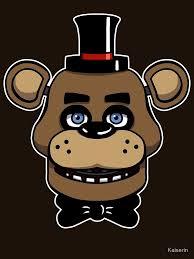Ever wonder why Five Nights at Freddy's ( ) hits different from other horror games? It's all in the colors. This isn't your typical dark and gloomy horror palette – it's a twisted take on what should be bright and cheerful.
Think about it: pizza parlors are supposed to be fun, right? Bright reds, cheerful yellows, playful purples. But FNAF takes these familiar, comforting colors and warps them into something unsettling. The once-vibrant reds now look like dried blood, those happy yellows have faded to a sickly shade, and the purples? They've become the signature color of dark secrets and murder mysteries.
The genius lies in how these colors tell a story of decay. Every shade reminds you that you're standing in a place where joy turned to terror. The grimy browns of Freddy's fur, the tarnished gold of the animatronics, even the flickering fluorescent lights – they all whisper tales of a happiness long gone wrong.
What makes it truly terrifying isn't just how dark things are – it's how you can still see traces of what this place used to be. Like looking at an old photograph that's been damaged by time and tragedy. The colors don't just scare you; they make you feel the weight of what was lost.
And maybe that's why we can't look away. Because somewhere in those corrupted colors, we see our own childhood memories being twisted into something darker. It's beautiful and horrible all at once – and that's exactly what keeps us coming back for more.
In FNAF , colors aren't just part of the design; they're part of the horror. They remind us that sometimes the scariest things aren't in the shadows, but in the corruption of what once brought us joy.
